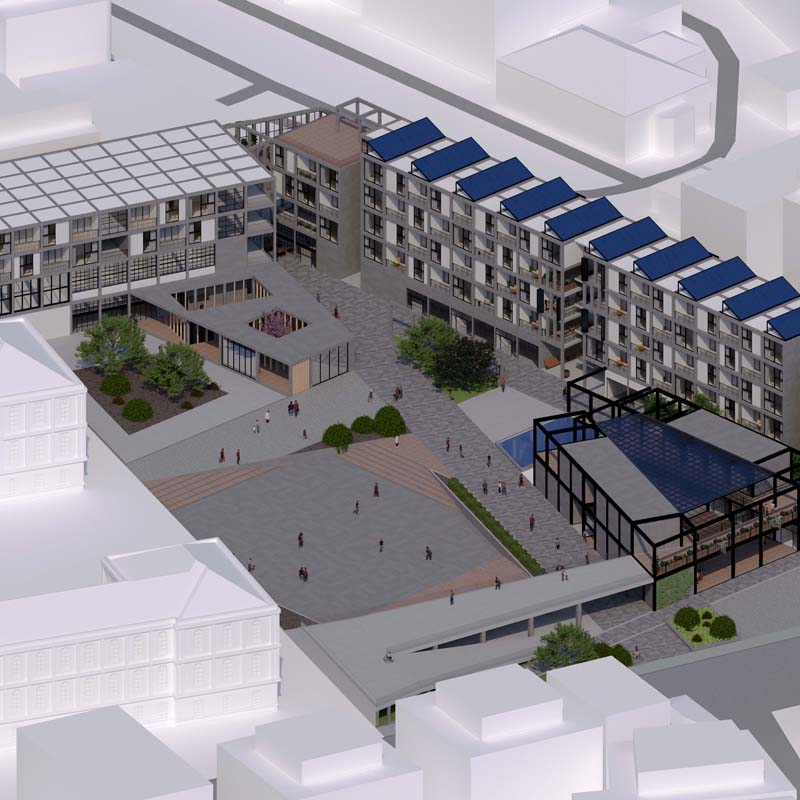

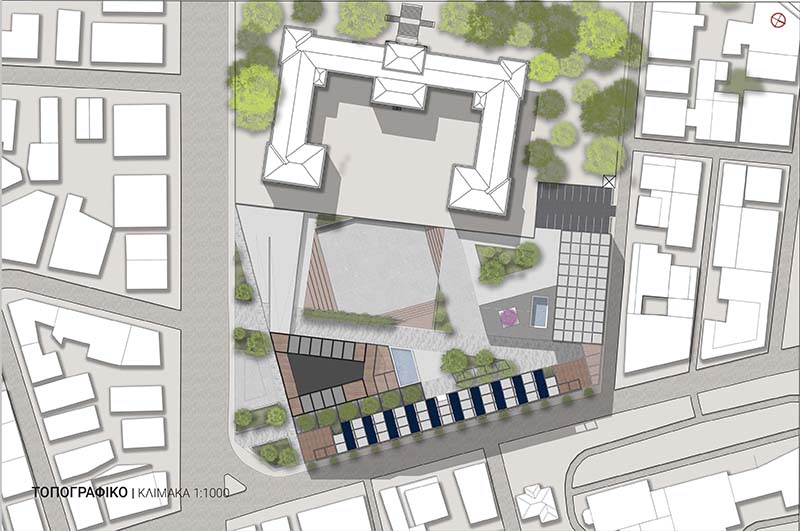

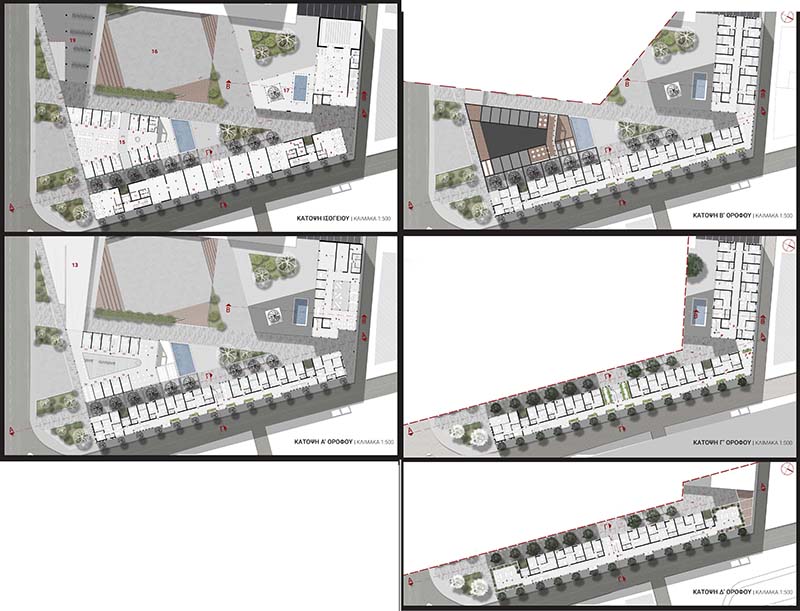

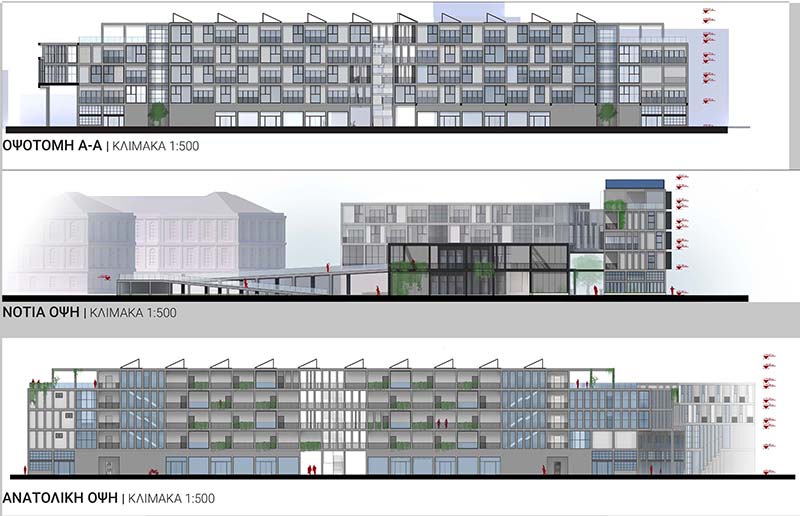

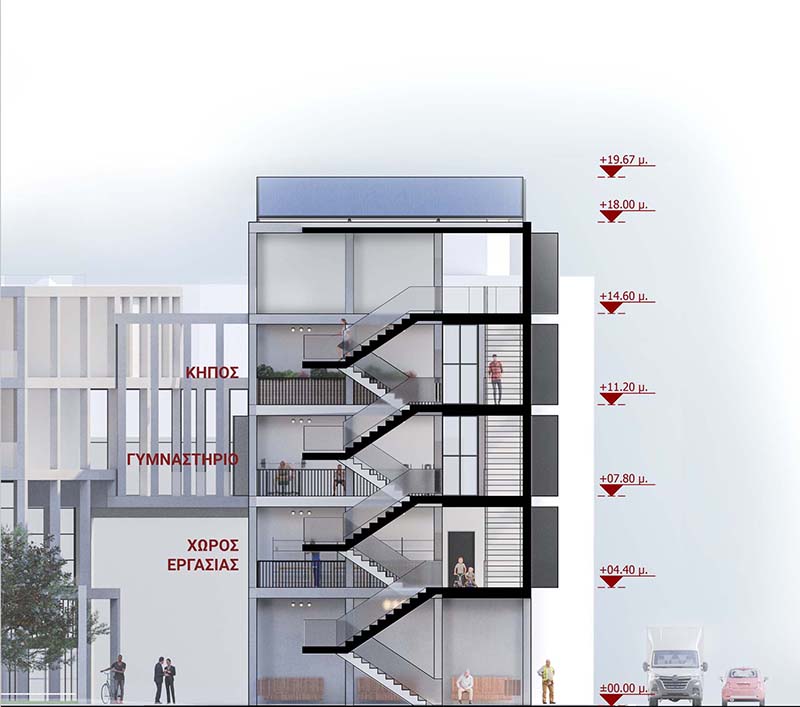

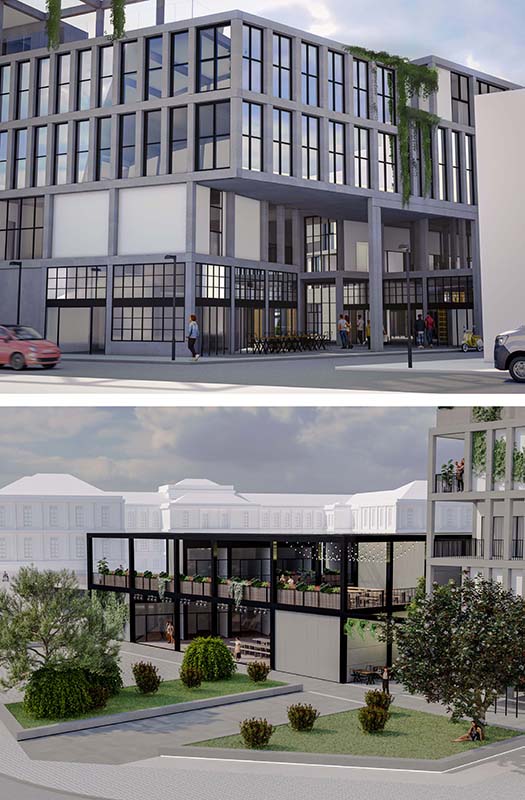

The project is located in the area of the existing facilities of the music and gymnastics club of “Papafion”, "Meliteus" which is adjacent to the orphanage. The main purpose of the club is theInstitutiongraduates’ smooth rehabilitation and integration into society and within the framework of this function, a space that provides accessible and affordable housing, commercial activities and professional opportunities, promotes socialization actions, education and entertainment while offering a core of gathering and communication in an area where parks and squares are lacking, is planned.
The site is located in a central part of the Municipality of Thessaloniki, in a densely populated area without any public openings, while it is surrounded by central and heavy traffic roads of the city, making its position central. In addition, the historic and emblematic building of the Papafion Foundation stands out. The theme is a flexible, sustainable mixed-use complex that appeals to an aspirational audience.
The bold building contrasts programmatically and architecturally as it combines the private living space with the urban public space. The urban dynamic of the space is captured in the design with a strong, distinctive identity that is recognizable from all sides thanks to its three-dimensional open grid. This smart frame offers spatial flexibility that allows for innovative space planning. In this way it hosts various functions that can be adapted and evolved over time. It offers a vibrant mix of commercial and social/cultural functions with the ground floors, stoa and outdoor public space as its social heart. Different types of apartments are combined with shared areas. Residents have the ability to share spaces, and experiences.
The aim of the thesis is to highlight and upgrade the work of the association and the monumental building, the creation of accessible living spaces and the upgrade of the wider area in the urban fabric of the city.
Supervisor: Kanarelis Theoklis
Reference Number: 972
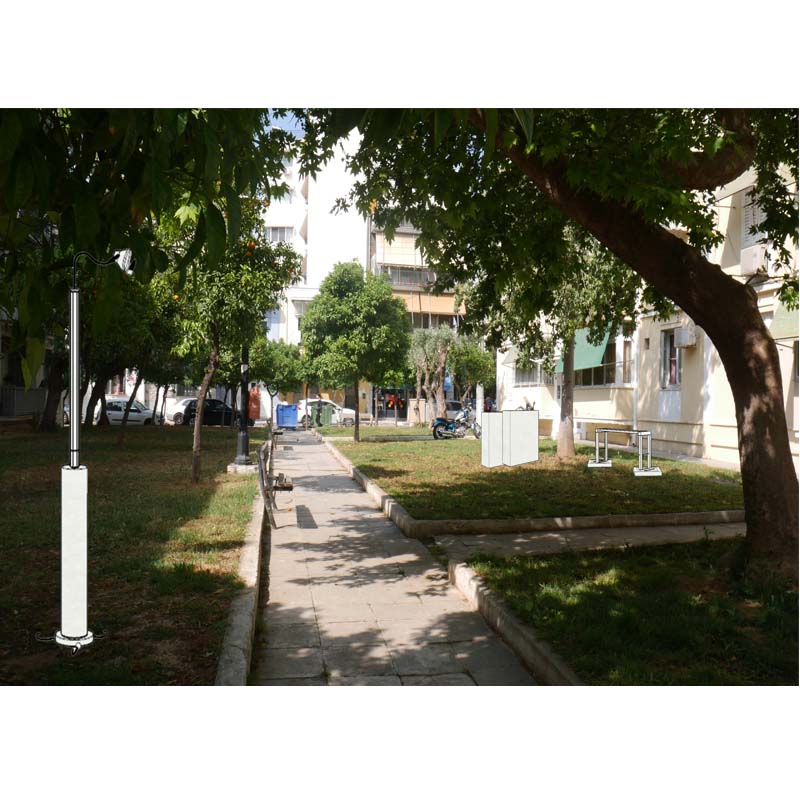

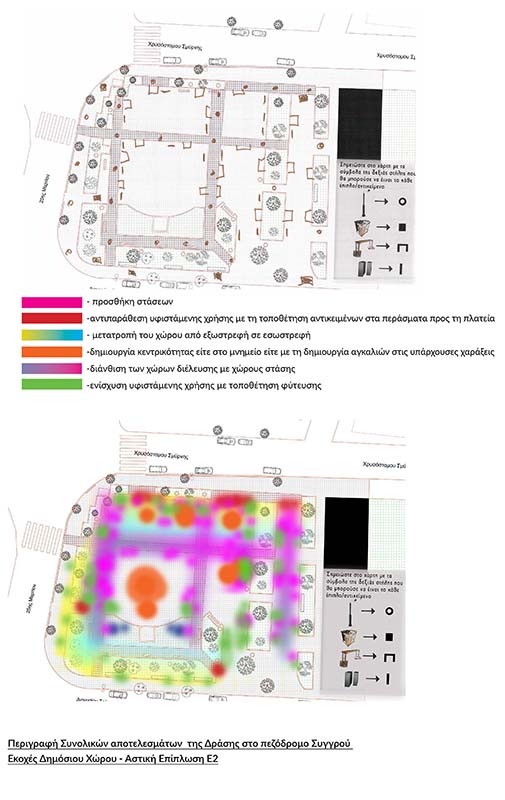

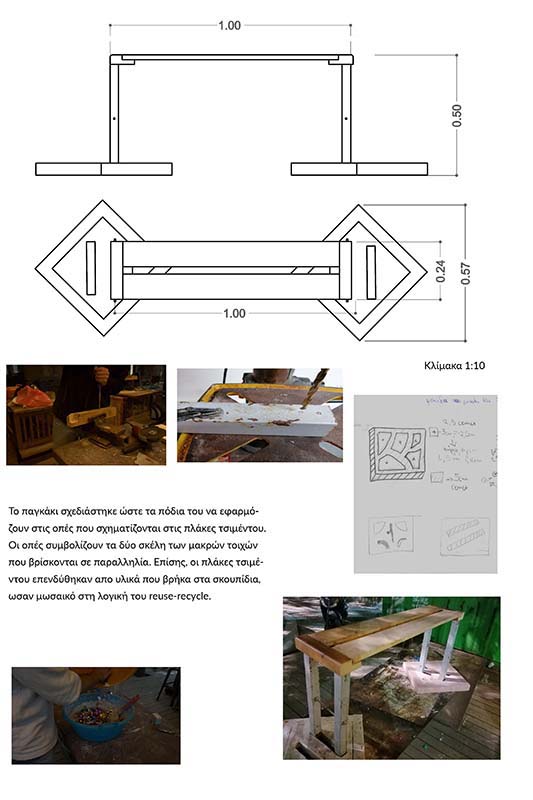

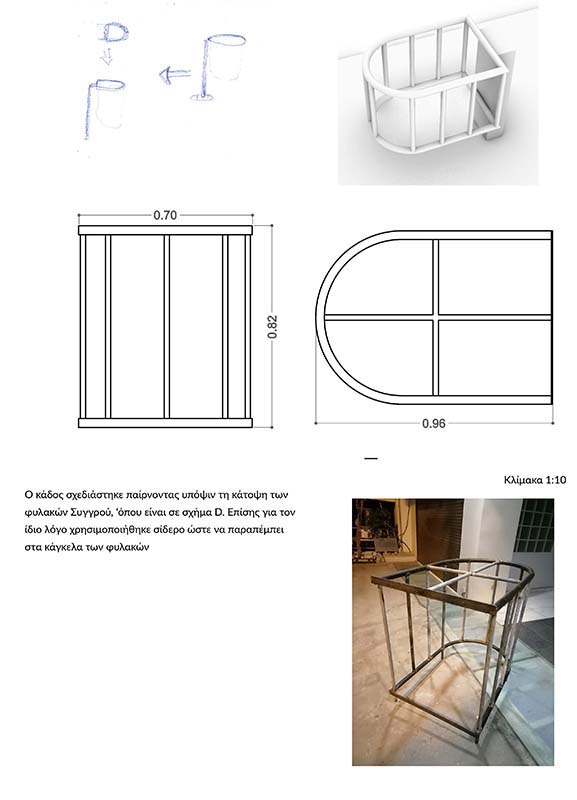

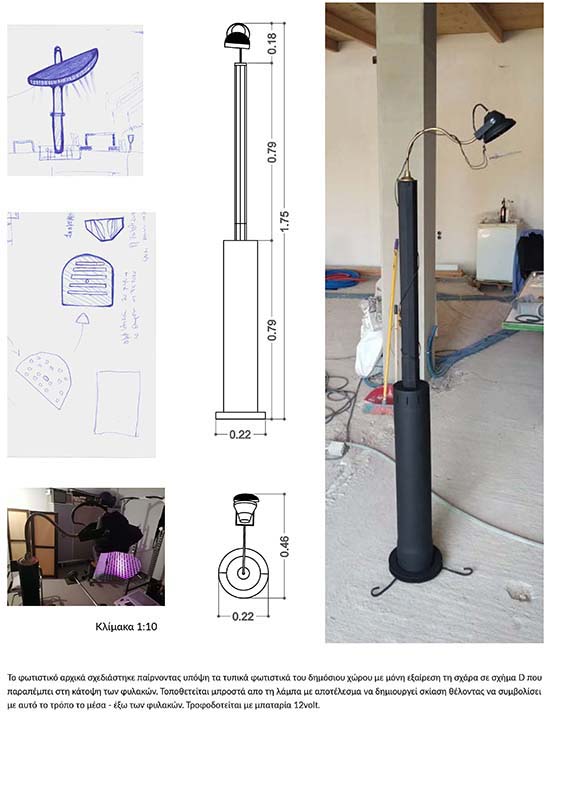

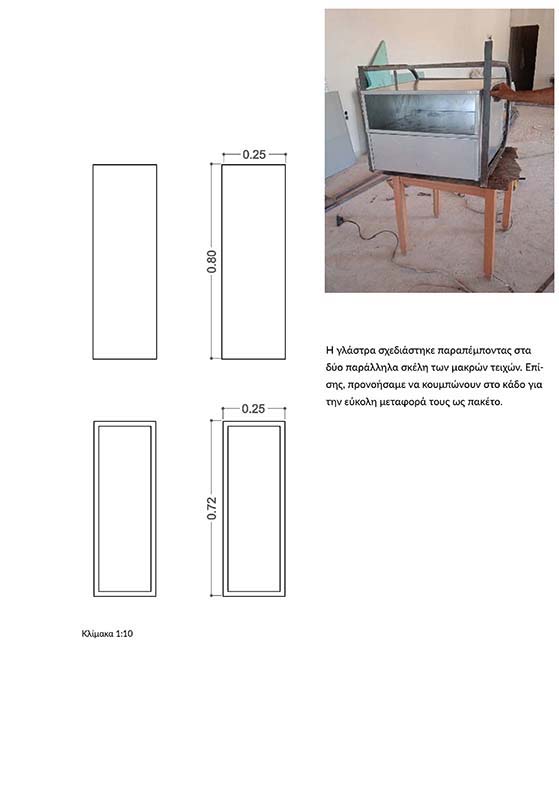

In this thesis my intention was to investigate methods and approaches of user participation in issues of public space production. At the same time, I was concerned as to whether the participation projects in the space production processes act as a disincentive for the architect's so authoritative role. The strategic investigation of the above issues that I followed was either research with interviews - discussions or with on-site actions in the field. The study area chosen was the "vulnerable lands" of Taurus. The area is of particular interest because on the one hand it is a palimpsest of memory and history (Long Walls, former Syngrou Prisons, Social housing) and on the other hand it maintains elements of a neighborhood even though it is quite close to the city center. On the occasion of the workshop held "Designing Coexistence with Long Walls on the Surface of the City", we set up a Participatory Planning group to initially delve deeper into the place and its inhabitants and at the same time try to rethink the public space between the apartment buildings. At the moment, we have succeeded in the first step of forming the group with the residents and sharing experiences from the public space and its memory through actions we have carried out in the past. Regarding the second step, we decided with the residents to make a community garden. As a precursor to the second step, I designed and manufactured urban furniture objects on a physical scale (lamp, bench, floor tiles, waste bin, pots) that in their form symbolically refer to the Long Walls and the former Syngrou Prisons. The purpose of the objects was for the concerns raised about the public space to take a material form. This happened through two actions that I carried out, in two different public spaces in this particular building block. The actions aimed at appropriating the public space and placing the objects per resident, either physically or in a design, in order to create versions of public space.
Supervisors: Lykourioti Iris, Kouzoupi Aspassia
Reference Number: 966
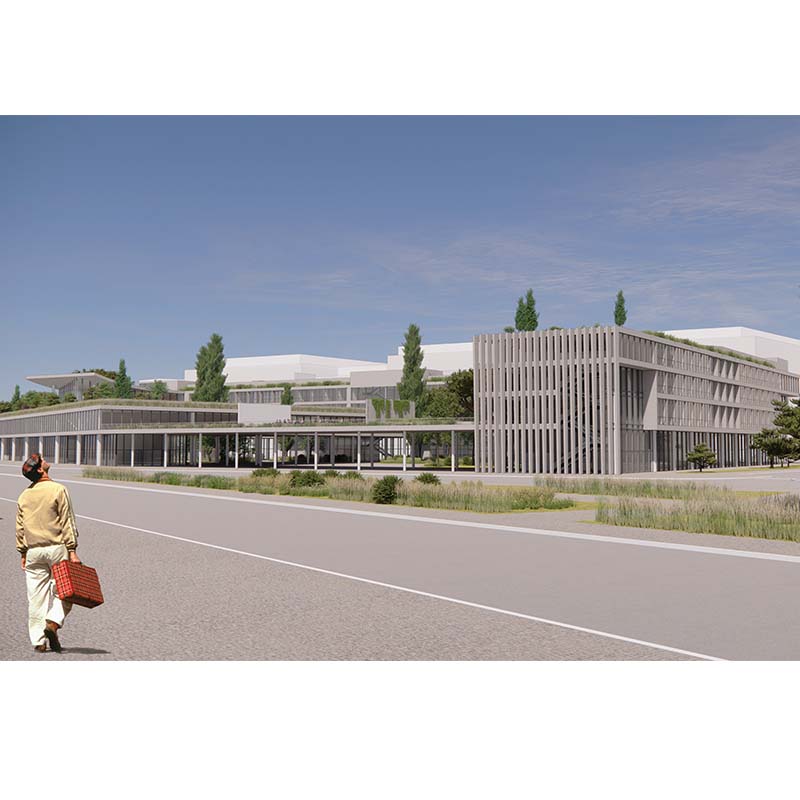

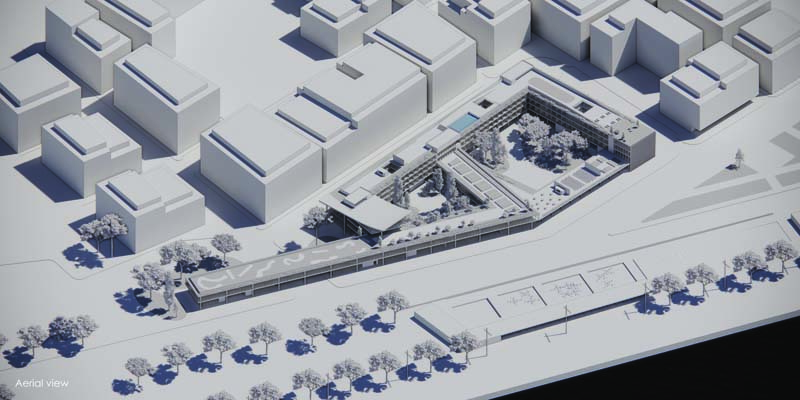

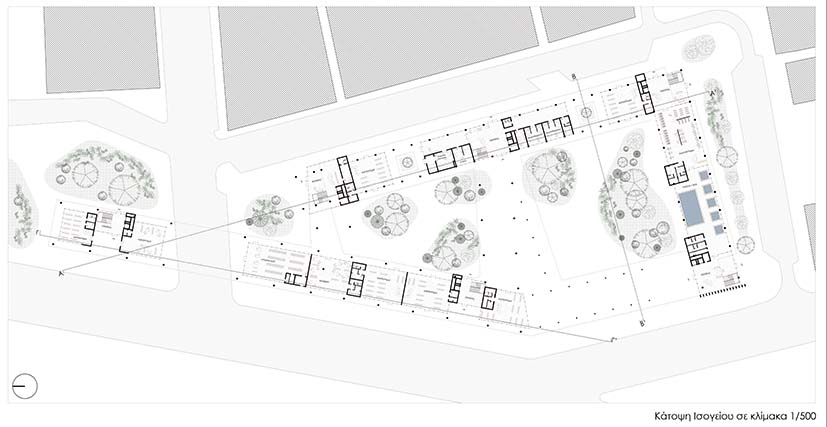

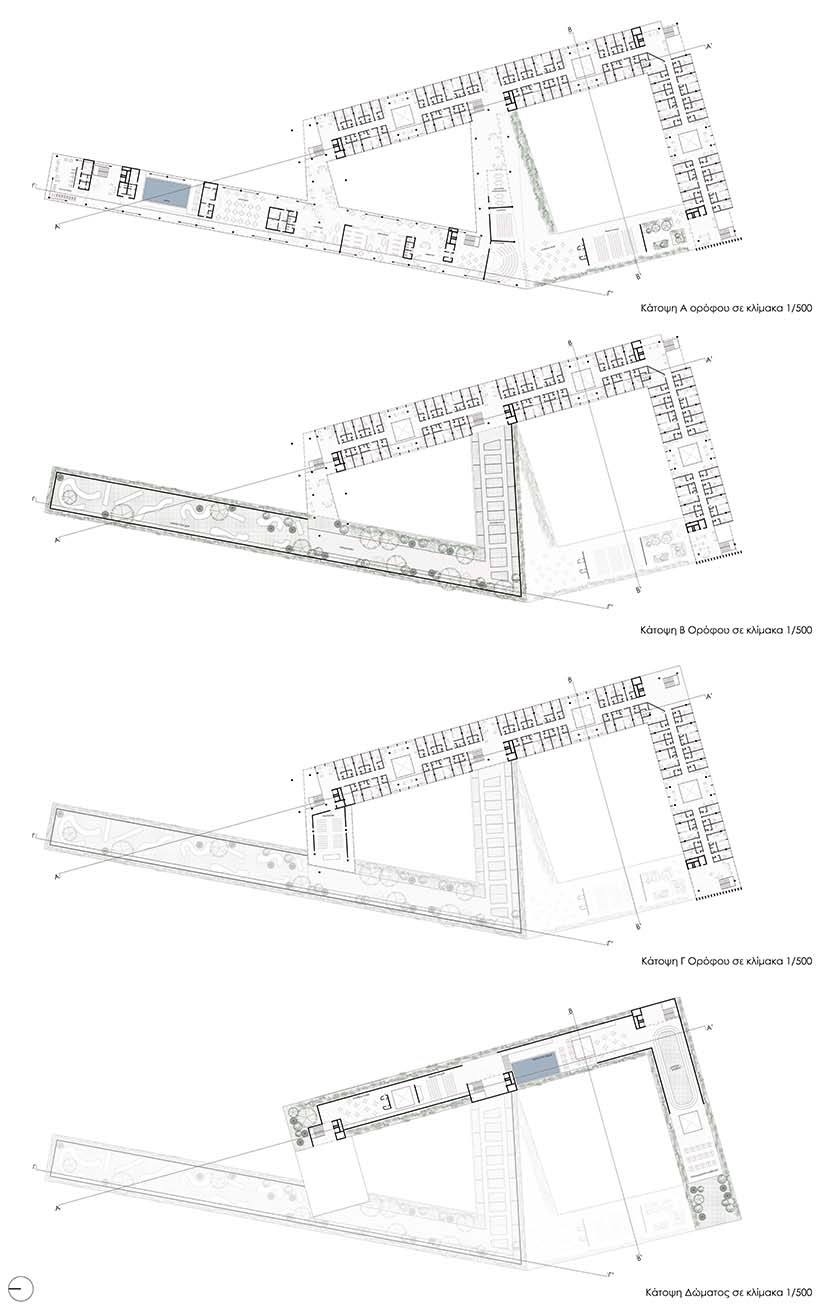

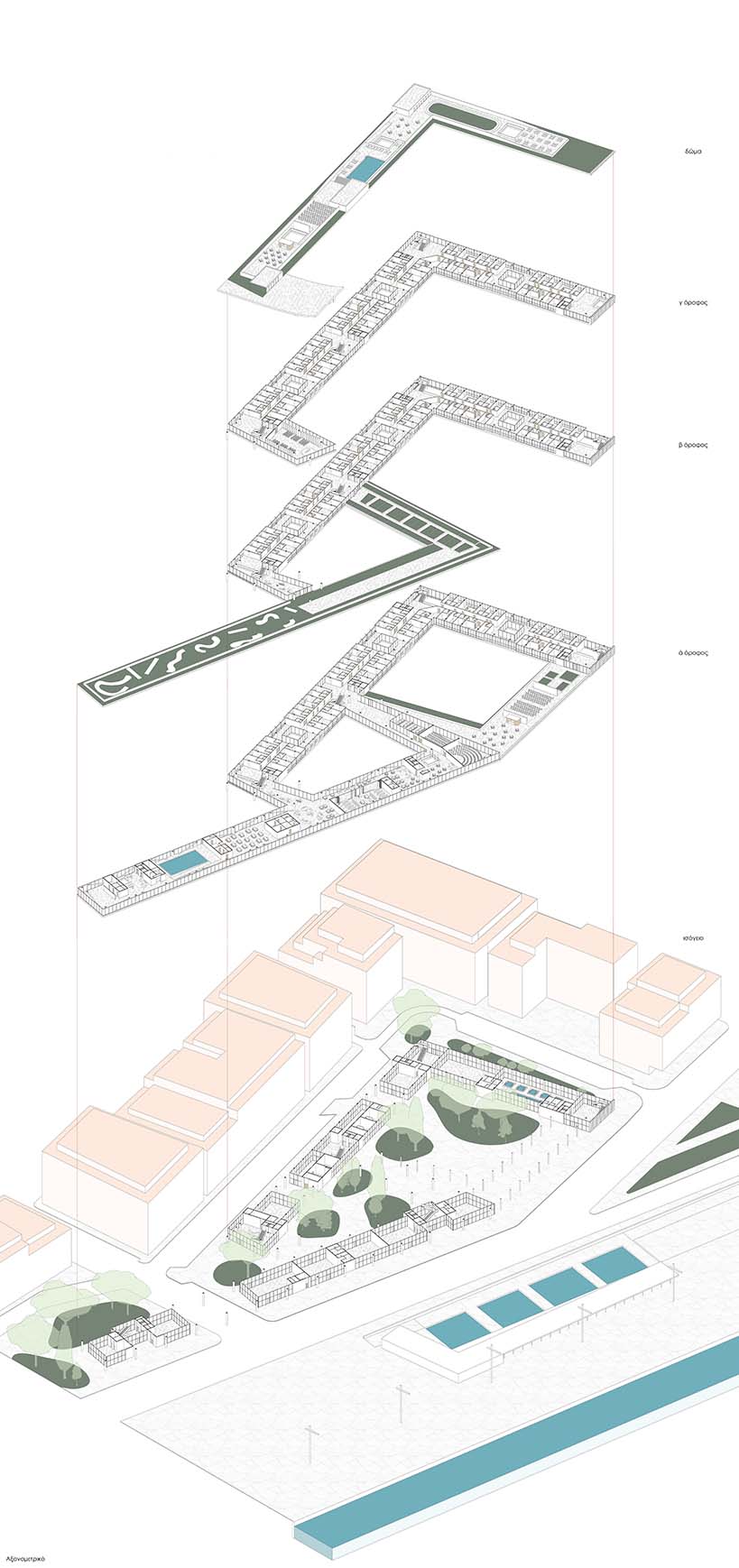



A standard rehabilitation center for the elderly that offers, in addition to medical care and food accommodation, multiple ways of entertainment, recreation, sports and creative employment, so that users have the opportunity to develop new occupations, socialize, and feel like belong to the whole / a local community, and not be treated as an unnecessary burden to society.
The design of the building has two main objectives:
A) The treatment of the building program with the best possible functional solution, for the ease of movement and living of the elderly, and
B) the creation of a building which will be a pole of attraction and a lung of green, both to the city and to its inhabitants, but without burdening the urban fabric despite its size.
A very important point to consider is accessibility by people with any kind of mobility. For this reason, the building is developed as much as possible in the horizontal plane, reducing to the necessary the vertical communication, but placing in many places elevators and stairwells.
Greenery and planting were used as a second "building" material, giving the character of an oasis in the city center. The green helps to improve the microclimate of the building, as well as creates a very user-friendly space, comfortable and cool.
Supervisor: Kanarelis Theoklis
Reference Number: 940
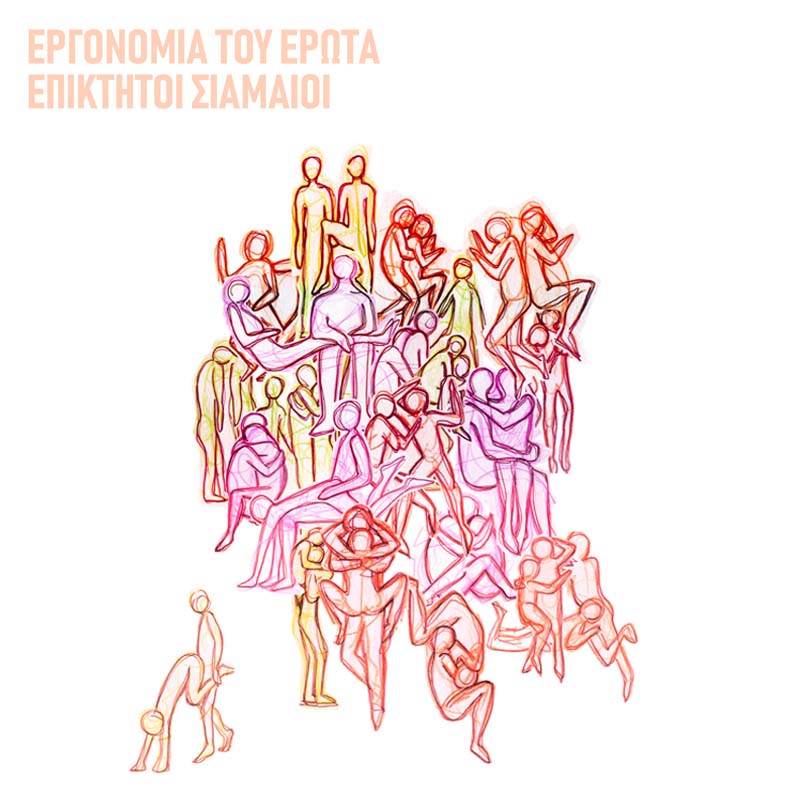





According to Plato’s writings, people were spherical androgynous beings with two faces, two genitals and eight limbs. Those creatures were so powerful that the Gods were afraid of them and Zeus decided to split them in two. Since then, people are half. In other words, pieces trying to be completed in their original form. Our desire for our gestalt and our impulse to return to our original disposition is called “eros”.
This diploma project is both choreography and a space tracing; or elsewhere a poetic ergonomics, which could be considered as dance and space performance that examines the movement of a hybrid in a determined setting. This hybrid consists of two bodies whose proviso is to be touched constantly in different parts, creating a continuous flow or movement in space.
Starting with the Platonic transcendence, a new kind of ergonomics is explored by reconstructing household in order to facilitate the hybrid. A prime stage is created, in which the choreography of this transcendent hybrid will be formed. This gesture is not going to study the construction, but a "theatrical stage" in which the daily life of the creature takes place.
Research approach:
1. Hypothetical choreography scenarios, using existing objects based on hybrid condition (sketches, notes)
2. Attempts to apply the above hypotheses (observation, demarcation, video)
3. Identification of spatial - functional problems
4. Reorganizing objects, retaining certain elements of the originals
5. Composing of the final scene for the choreography
In conclusion, theme of this diploma project is the “Ergonomics of Eros” by choreography and a space tracing of a household that walks the line between useful and transcendental.
Supervisor: Psychoulis Alexandros
Reference Number: 947






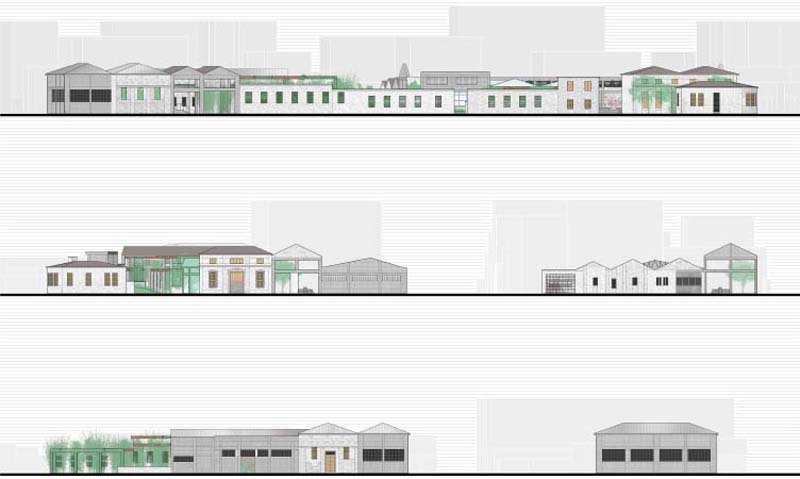

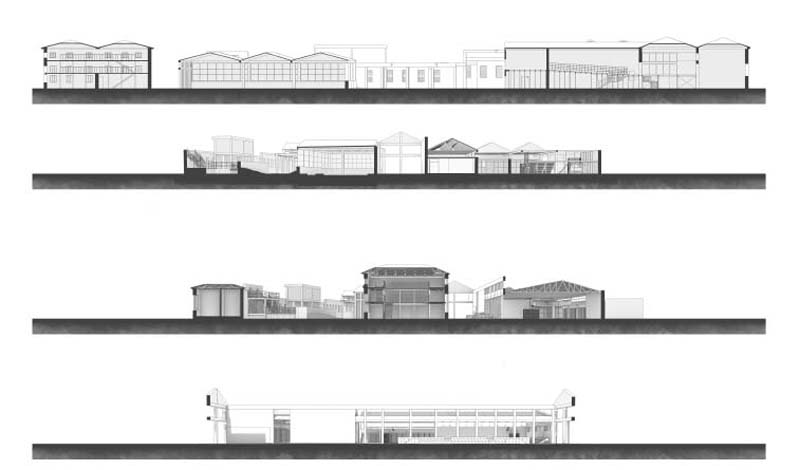



The former machine shop of Glavani and Kazazi, “the Hammer”, is located in Volos at 22 Papadiamanti Street, opposite the trains and today closed with sheet metal. Around this building there is a neighborhood that is forced to wake up every day next to a ruin of 6,540 sq.m. Even thought the neighborhood wants the building to be demolished, the proposal focuses on the minimum interferences in order to transform the building into an alive space. The former machine shop now belongs to the National Bank and the future buyer will lose the square meters of Thrakon Street as the building interrupts it. The cut of the plot in 3 pieces and its purchase by the Municipality and the University of Thessaly is the beginning of the proposal as it will be possible to buy it cheaper so that it can be reused as soon as possible. The program includes the production and consumption of theoretical and practical knowledge, materials and food. Dining and sports areas are also being designed while most of the building is being converted into a park.
Supervisors: Remy Nicolas, Kouzoupi Aspassia
Reference Number: 948
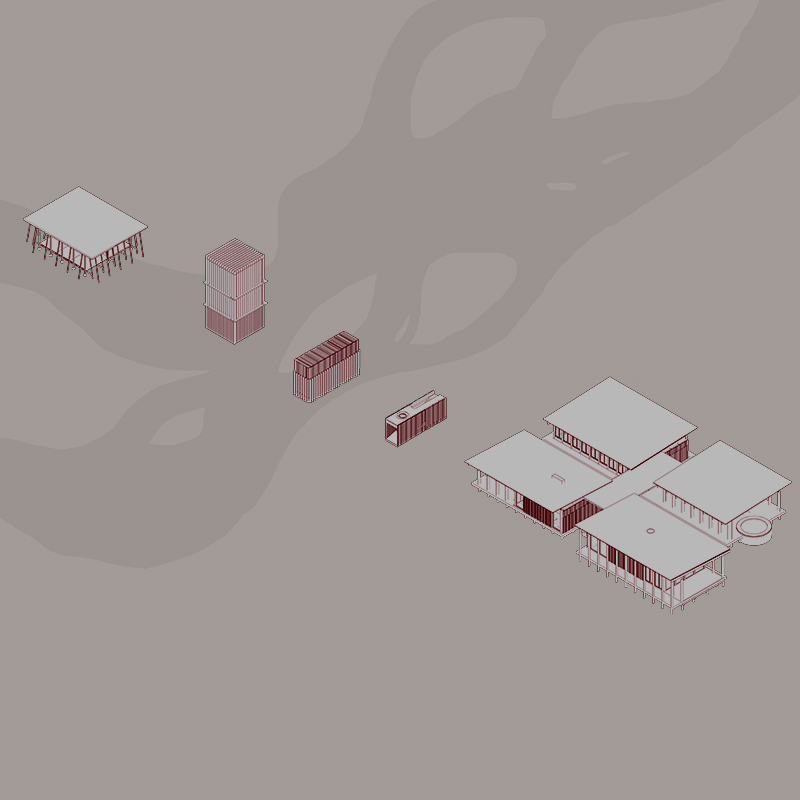

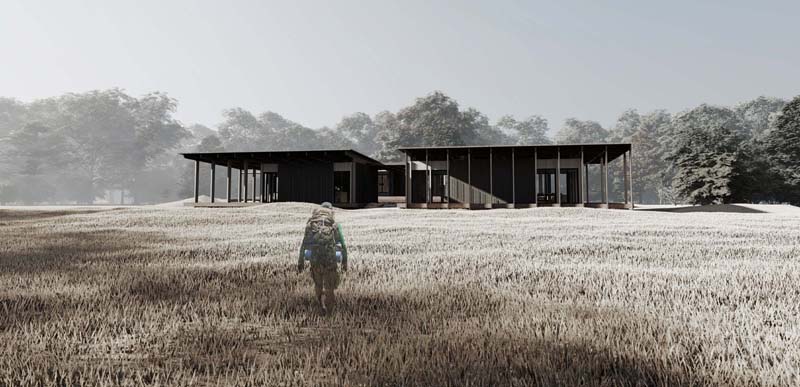

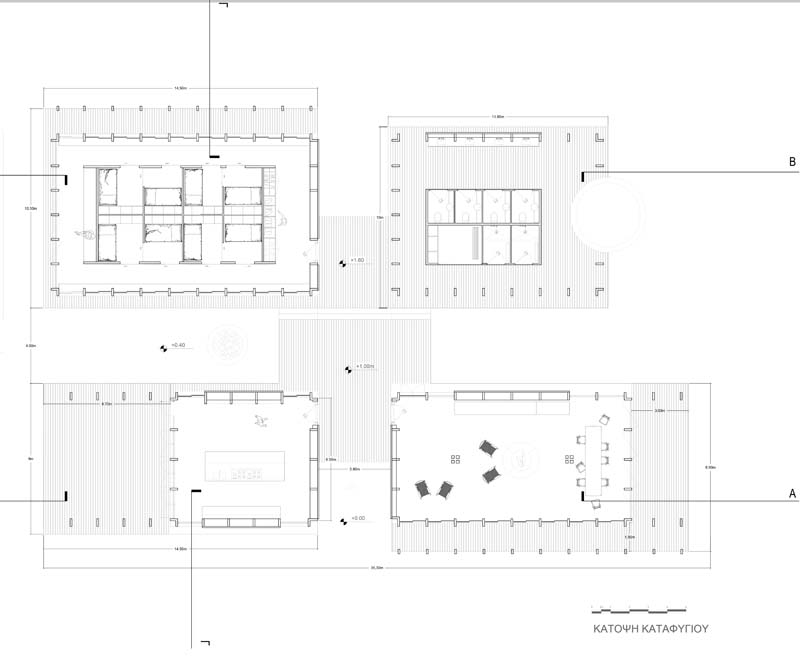

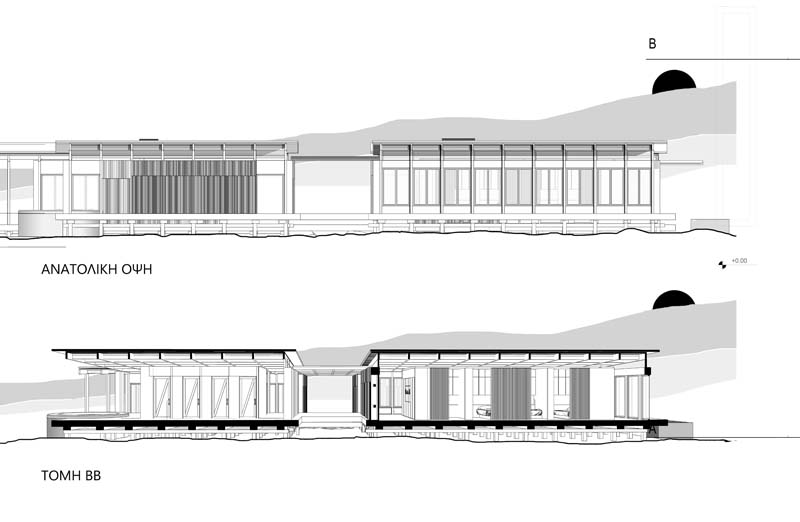

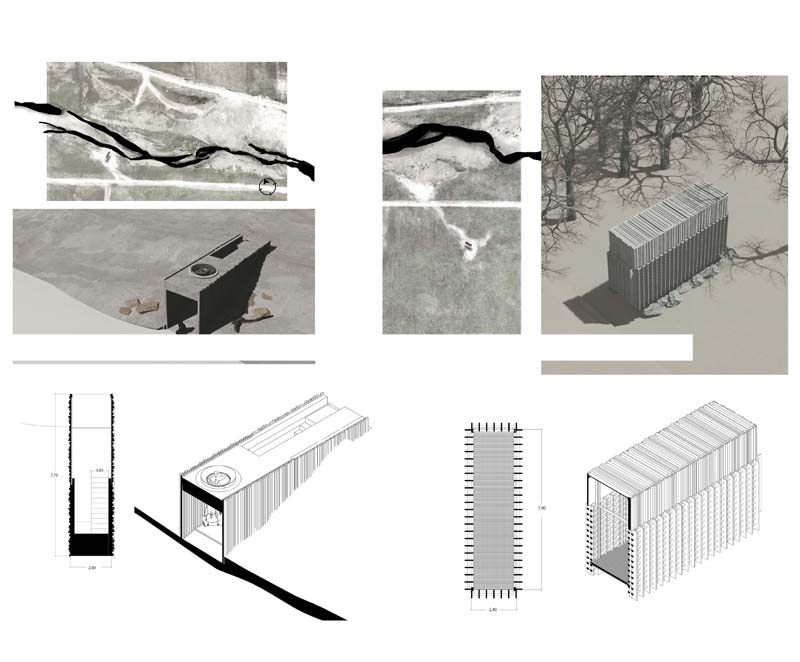

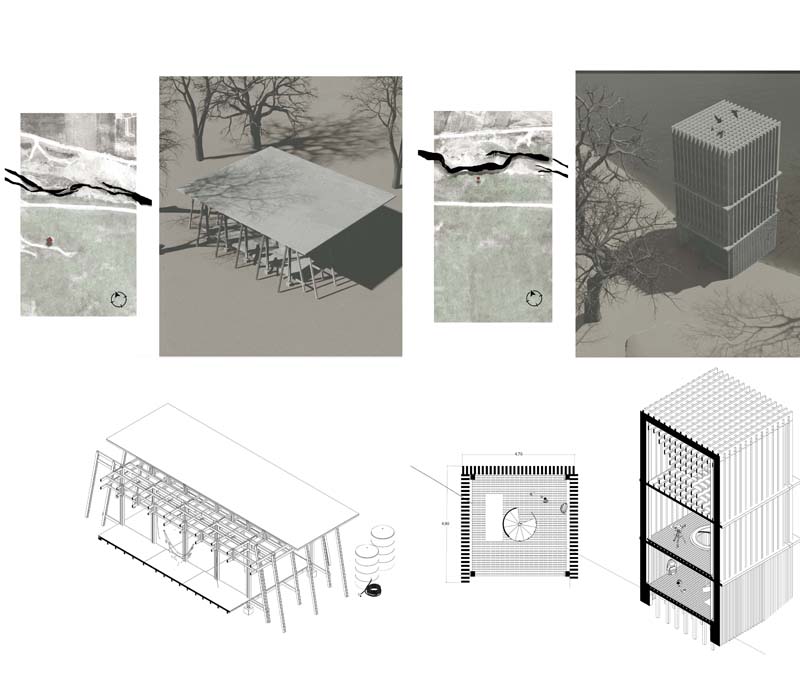

The Sperchios river flows through the valley of Fthiotida and on its banks are located areas of ecological importance. The riverside forests and the impressive river delta are often the subject of research and study not only by competent services, but also by walkers. There, they are invited to observe either the various birds that inhabit the area, or the dense plane tree forest that extends parallel to the flow of the river.
The way the area can be recorded requires the process of walking. In a meditative form, with a need to search. The gravel, the sand, the trunks of the trees, the dense foliage, the paths between the weeds, unfold as you walk. The landscape is inhabited by the observer as he explores it.
The present dissertation includes interventions in the plane tree forest of Mexiates, a landscape that changes with the overflows of the river during the rainy seasons of the year. Shelter structures are created, able to house the bodies of those who observe, those who walk or those who seek to isolate themselves. But also when these are missing, they act as a nest for animals and birds. The intervention seeks the harmonious coexistence with the environment and the dialogue with it. The goal is not the development of the region, nor its promotion. It is a gentle gesture concerning the units and groups that chose to be in the area.
The design logic includes the possibility of deterioration and corrosion. Constructions are parts of the landscape whose materials work such as sand, soil, stone and river trees that are transformed by time, weather and wind. The form of the scattered constructions turned out to look more like sculptures placed in the space. They include observation and accommodation, in different parts of the forest and at different scales, functions that serve the activities that take place in the area.
Supervisor: Stylidis Iordanis
Reference Number: 935
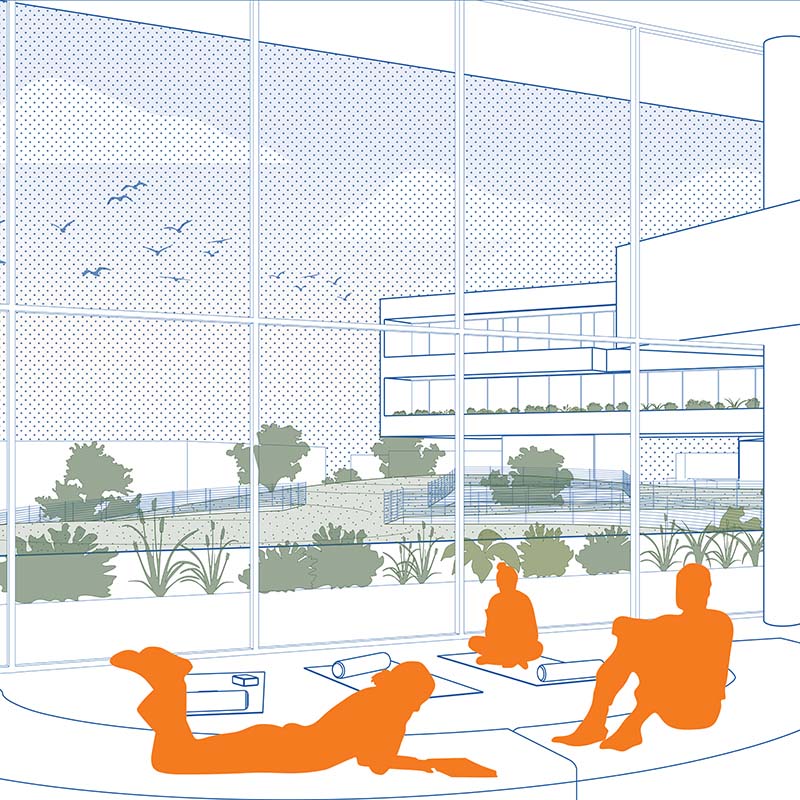

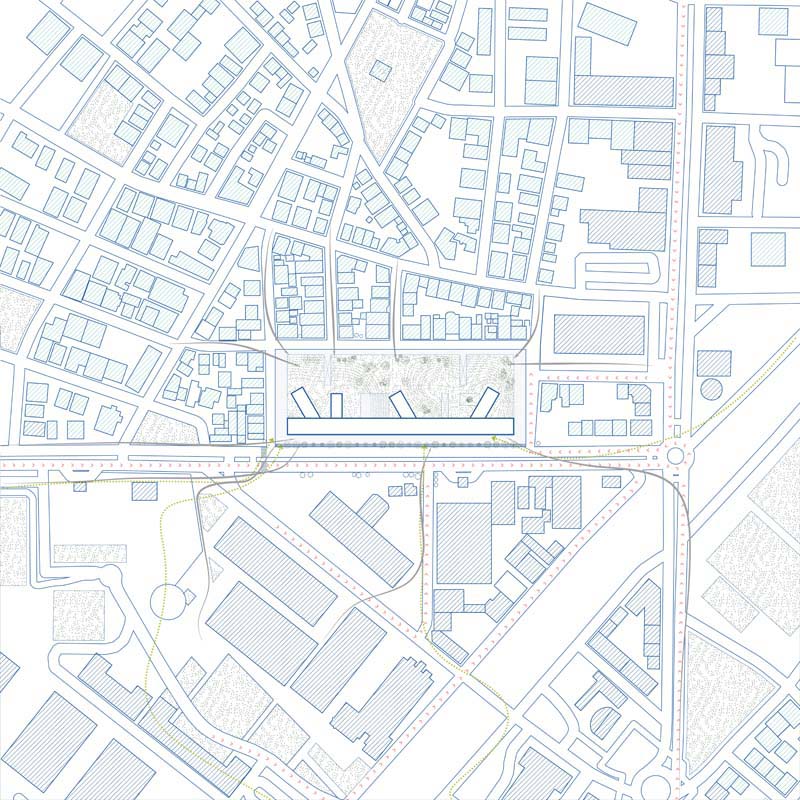

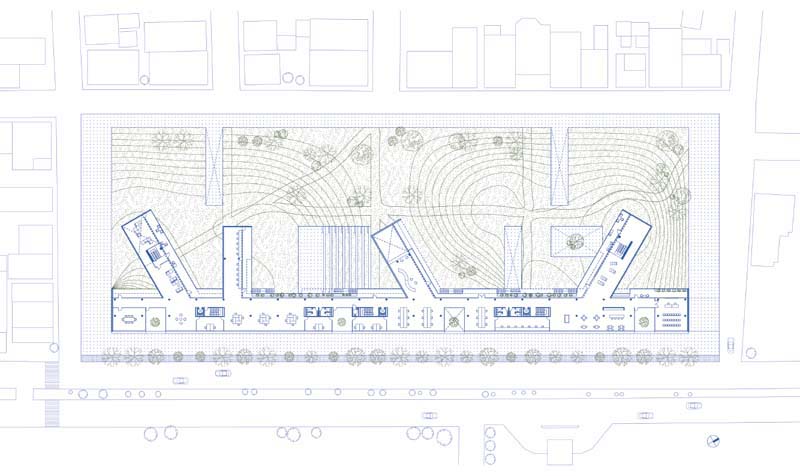

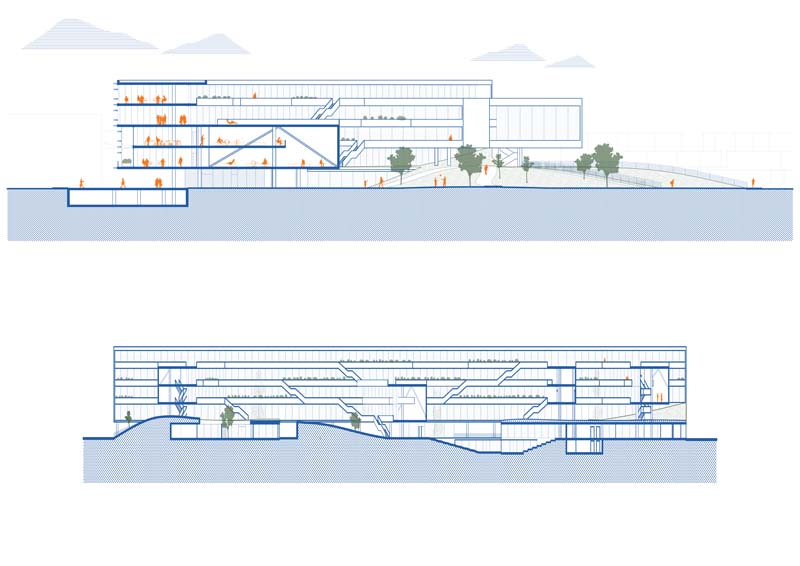

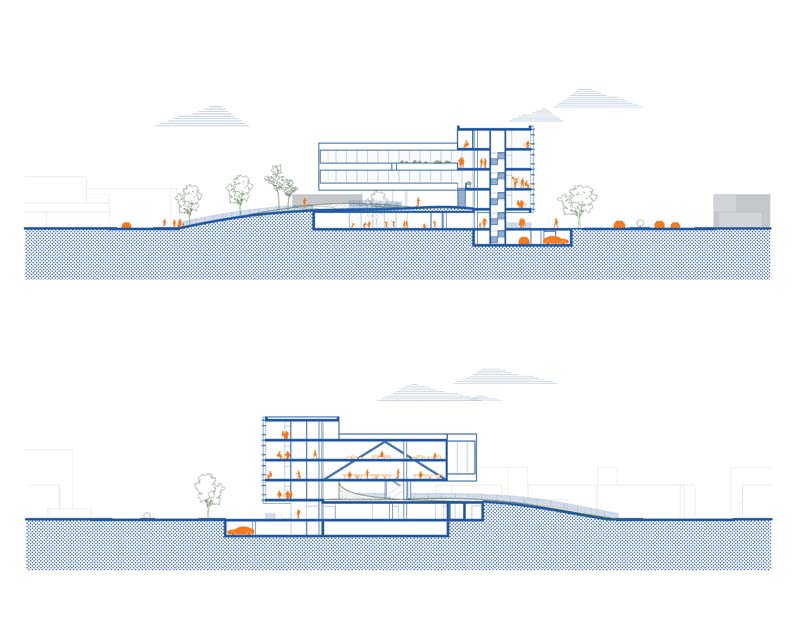

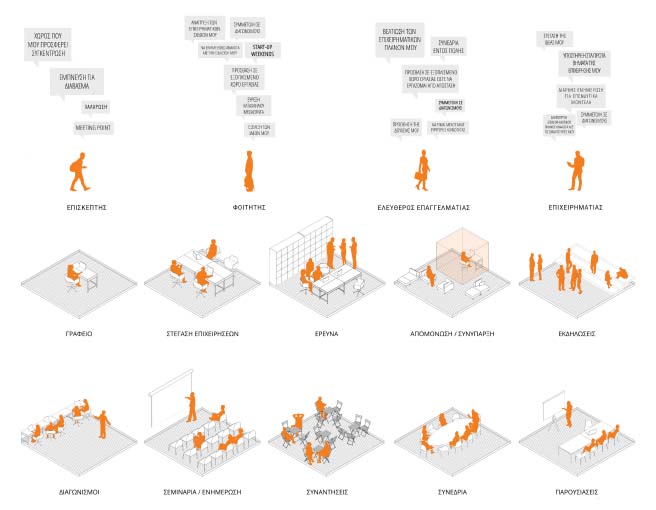

The following thesis concerns the study of an office building that houses start-up businesses, researchers, university students and scientists.
It is located in the city of Volos, in the area of Neapolis, on Leoforos Athi- non, where it’s called to manage a local condition, in contrast to a super- local traffic axis. The main volume acts as a front to the main road, while simultaneously leaving space for the construction of a public hill-park towards the neighbourhood. It provides open-plan spaces for collective work, as well as isolated spaces for the purpose of developing ideas for business activities.
Moreover, the need of adapting the work space to the greek climate, leads to the design of volumes that “hover” over the greenery, that come to compliment the needs of the building and betray an outgoing approach. They function as relaxation spaces, with balconies that allow the vertical continuation of the green hill, while also being outdoor working spaces.
Supervisor: Mitroulias Giorgos
Reference Number: 963
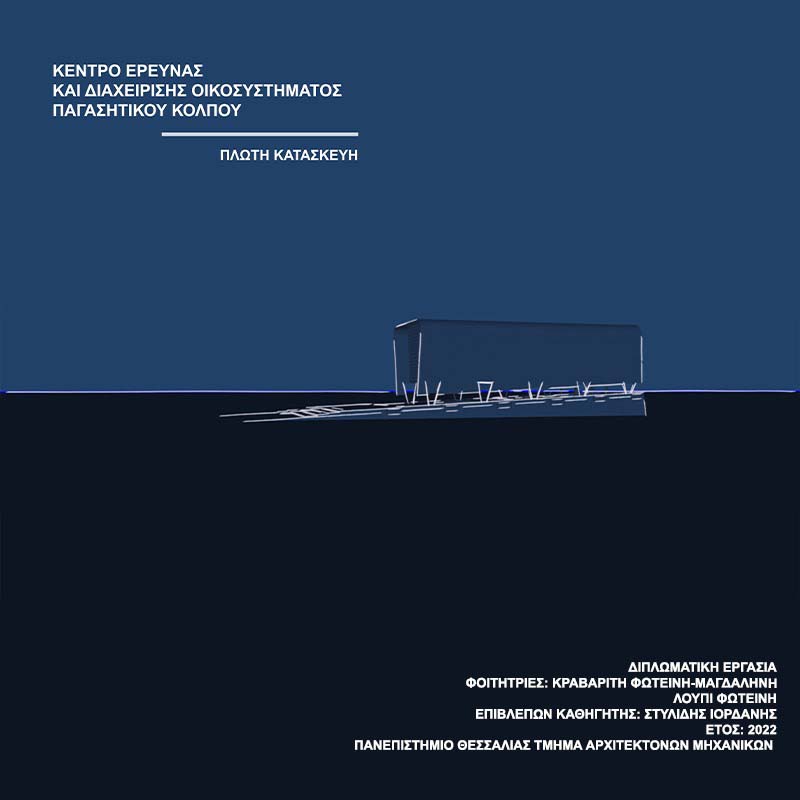

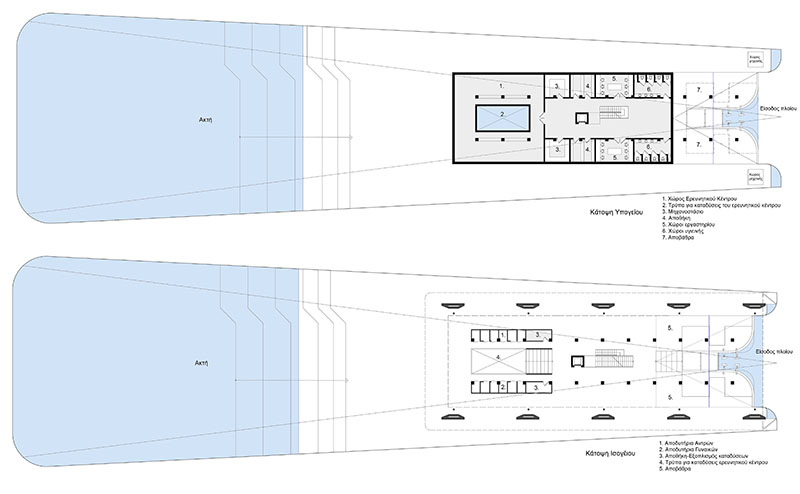

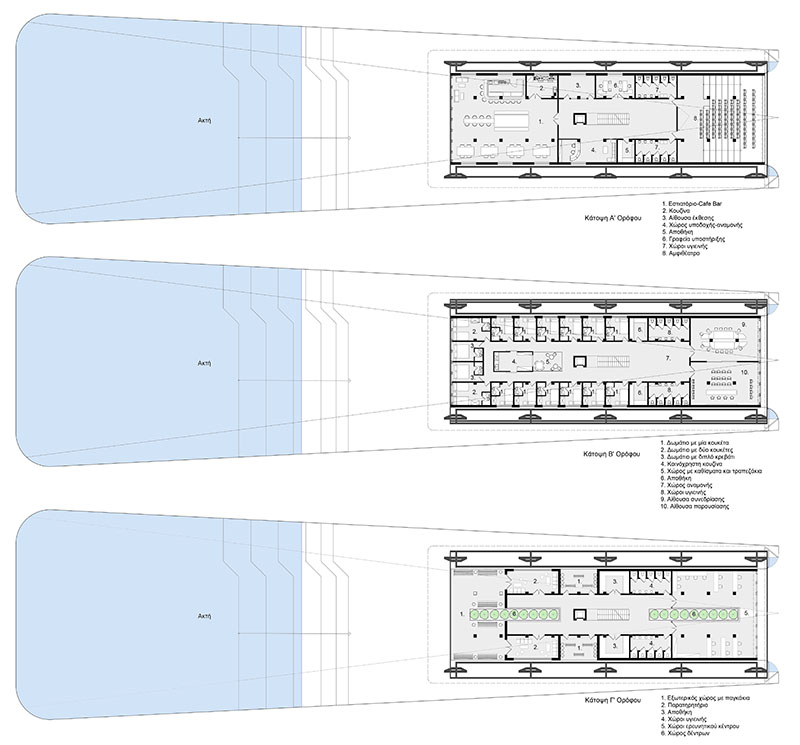

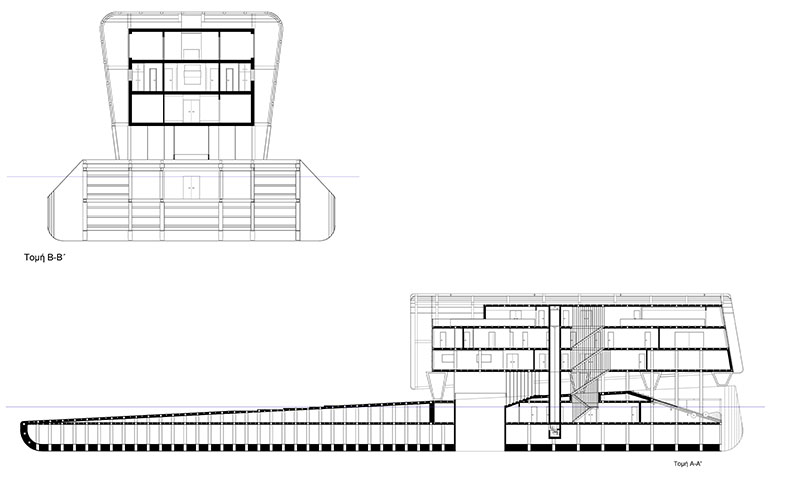

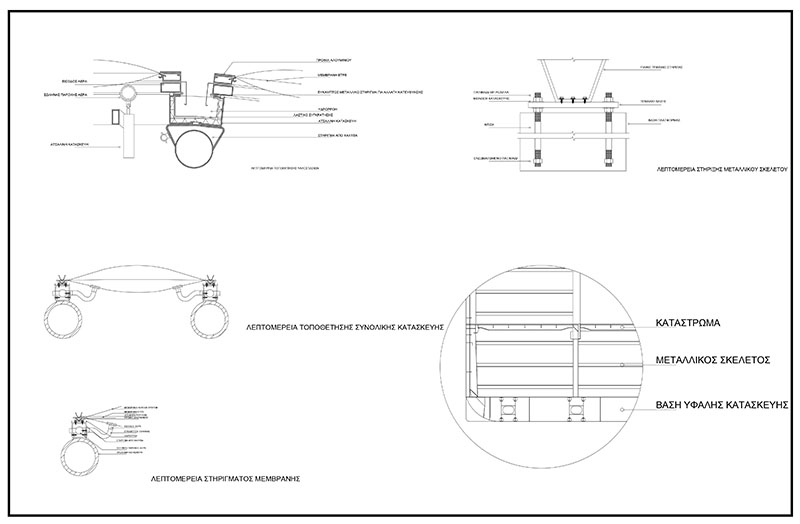

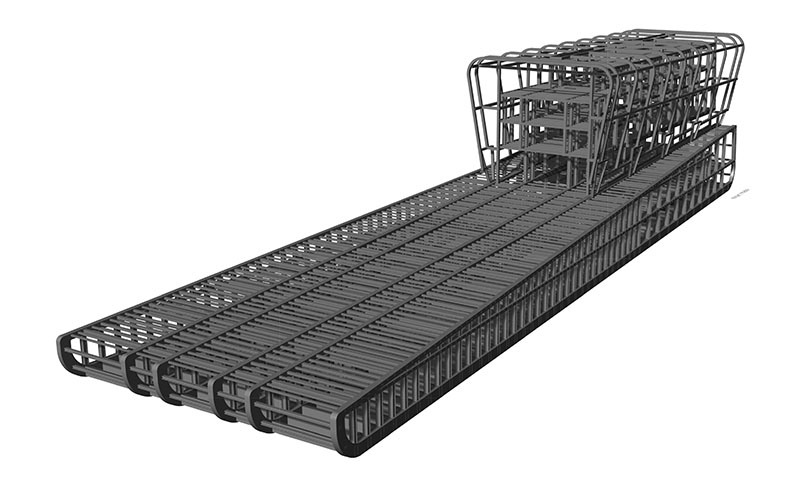

Our work aims to investigate and design a proposal for the possibility of organizing a hybrid relationship system. The combination of a limited vacation spot and an integrated research center for the study and management of the Pagasetic Gulf ecosystem, in the prefecture of Magnesia. Continuation of our research paper where the dwelling in the water was commented in detail. We propose and describe in detail the form and location of the floating structure remote from passenger ship routes or connected to land. Hub of complex activities throughout it’s surface that blends (submerges-protrudes) with the surface of the sea kai supports the research center raised on the rig-dock platform. The research and management center, the water gardens, the floating “sand”, the fish farms and the diving support unit will be arranged on the pier and in the building with the aim of studying the ecosystem, sanitizing the bay and environmental – energy autonomy. Place of limited holidays, enjoying the water and the landscape. Parking for small boats, visitor transport network, living spaces in the shade and in the sun, restaurants, refreshments and an open – closed amphitheater. In this way we consider the we are creating a hybrid system of life on the pier. Perhaps in more such constructions that support carefree life but also research, the protection of ecosystems. A variety of programs of expression, triumph of peaceful life at sea.
Supervisor: Stylidis Iordanis
Reference Number: 980

